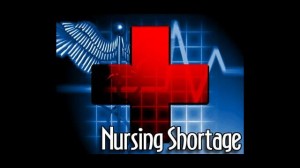By Rose O. Sherman, EdD, RN, FAAN
 The Atlantic magazine features a story this month titled The US is Running Out of Nurses. It is pointed out in this article that nursing workforce projections are being revised because of the growing demand for nurses in so many new emerging areas. This is coupled with an aging workforce who are now retiring and an aging population in need of more health services. The Department of Labor now reports that we could have up to 1.2 million RN vacancies emerge between now and 2020. Nurse leaders are beginning to experience challenges with recruitment in their environments. In my state, a Florida Center for Nursing Report 2016 was recently issued indicating that we currently have over 12,000 RN vacancies that are expected to grow to over 22,000 by the end of 2016. The supply of nurses is not keeping up with demand.
The Atlantic magazine features a story this month titled The US is Running Out of Nurses. It is pointed out in this article that nursing workforce projections are being revised because of the growing demand for nurses in so many new emerging areas. This is coupled with an aging workforce who are now retiring and an aging population in need of more health services. The Department of Labor now reports that we could have up to 1.2 million RN vacancies emerge between now and 2020. Nurse leaders are beginning to experience challenges with recruitment in their environments. In my state, a Florida Center for Nursing Report 2016 was recently issued indicating that we currently have over 12,000 RN vacancies that are expected to grow to over 22,000 by the end of 2016. The supply of nurses is not keeping up with demand.
A challenge in healthcare today is that there are so many competing forces vying for the attention of leaders. The nursing workforce has not been a central issue for almost a decade. However, times are changing and a crisis is pending. Nurse leaders need to become more strategic and spend time preparing their organizations for the changes that loom ahead.
In an article published in the January-February 2013 Harvard Business Review, Schoemaker, Krupp and Howland identify six essential skills to be a more strategic leader based on their research with more 20,000 executives. These skills which can be developed include the following:
1. The ability to anticipate
Effective leaders must be able to identify threats and opportunities to their organization and be very realistic about them. Leaders take time to read the signposts.
2. A willingness to challenge assumptions
Strategic thinkers are willing to challenge the status quo. They understand that although they may currently a employer of choice, this could radically change with a younger workforce who view their careers differently.
3. Recognize patterns and interpret the environment
Effective leaders are able to see patterns in the environment that could lead to change. We know that many more nursing jobs are in community-based settings that might be more attractive to nurses looking for work-life balance. Leaders are also reporting that their Gen Y nurses are working fewer hours and refusing overtime.
4. Make the tough decisions in a timely way
Many organizations and leaders err on the side of not moving quickly enough. When leaders wait too long to initiate change, they can end up in crisis mode. This is where staged commitments and smaller bets can pay off.
5. Align all the stakeholders
Strategic leaders need to find common ground with their stakeholders and ready their environments for change in advance. Truth telling to the senior leaders about the realities of what could happen is key.
6. Look for lessons learned
The most effective leaders are continuous learners and look for lessons learned in every situation. What has worked in the past with respect to recruitment and retention may not work in the future.
Now is the time to begin your SWOT analysis and include the next generation of nurses in the discussion by asking the following questions:
Strengths – (these would be areas where your health agency would excel as an employer of choice for nurses)
Weaknesses – (these would be areas of weakness as an employer of choice for nurses)
Opportunities – (these would opportunities for collaboration with colleges of nursing or initiating something new to increase attractiveness as an employer)
Threats – (these are factors in your competitive environment/geographic area that could serve be threats to maintaining a status as an employer of choice)
At the conclusion of your analysis, ask the question as to what the implications are for your organization and what leadership actions should be recommended. If you are not already impacted, you will be soon so there is no time to waste.
Read to Lead
Grant, R. (February 3rd, 2016). The US is running out of nurses. The Atlantic.
Schoemaker, P.J.H., Krupp, S. & Howland, S. (2013). Strategic leadership: Essential Skills. Harvard Business Review. January-February 2013, p. 131-134.
© emergingrnleader.com 2016


 LinkedIn
LinkedIn Instagram
Instagram